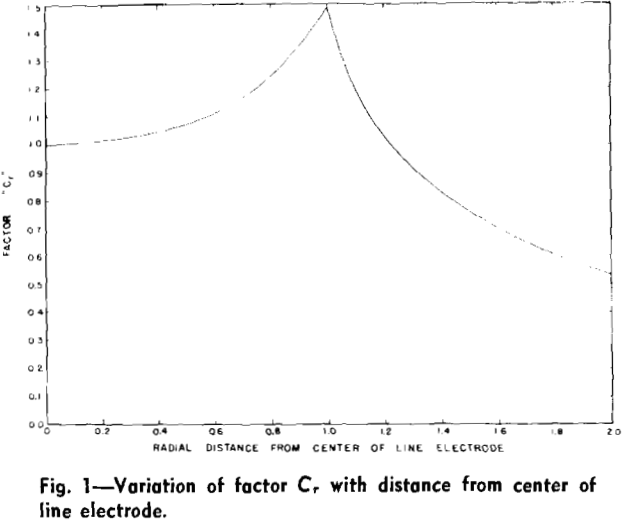Sphalerite, the ore mineral in this area, occurs with a considerable amount of marcasite. In general the higher the percentage of sphalerite in the ore, the higher the percentage of marcasite; however, there may be mineralized zones high in marcasite but low in sphalerite. Orebodies in general are relatively narrow and elongated.
The point surface electrode was placed at a considerable distance from the hole, that is, 2500 to 5000 ft, depending somewhat upon the depth to the sulfide zone and the distance from the hole containing the subsurface electrode to which exploration was considered. A higher voltage output from the power source would have been desirable, although no difficulty was encountered in determining null points to a distance of 500 ft.

Although interpretation of results given in this paper is qualitative, the paper as a whole would not be complete without a discussion of the theoretical distribution of potential due to a circular line electrode. The theoretical distribution would be required if a quantitative interpretation of the measured potential distribution were to be made.
The theoretical potential distribution due to a circular line electrode can be obtained by means of Legendre polynomials. Using the method as developed by Weber, the potential for a circular line electrode in a semi-infinite, homogeneous, isotropic medium can be expressed, using the spherical co-ordinate system, as:

where
θ is the angle at the origin, taken on the axis of the circular electrode between the axis and the line drawn to the circumference of the circular electrode.
α is the angle between the axis and the radius, r.

r is the radius from origin to point in question.
R is radius of circular electrode.
p is resistivity of the semi-infinite medium.
Pn is Legendre polynomial of the first kind.
V is the potential.
I is the current.
In general the results obtained from the use of a point surface electrode in conjunction with the subsurface electrode were inconclusive, as no interpretable results were obtained on the one area in which the method was used.
Limitations of the Circular Line Electrode: If the country is wooded, the time required to lay out the circular line electrode and map equipotential lines becomes excessive. There are also limitations common to other equipotential methods:
- Little variation in equipotential lines is obtained at radii less than the order of depth of the subsurface electrode.
- Equipotential lines are distorted in the vicinity of the circular line electrode owing to geometry of the earth-electrode contacts.


